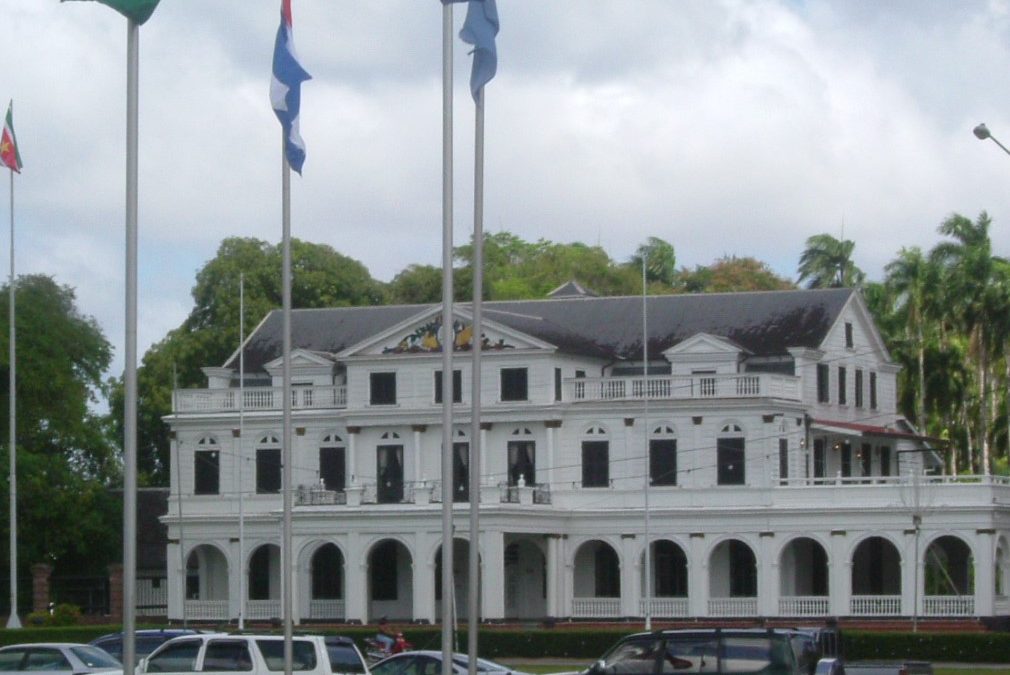History Suriname

Suriname has already originated in the Paleolithic period
Archaeological excavations indicate that around 10,000 BC (possibly earlier) the first Paleo-Americans settled. These were nomadic hunter-gatherers. The archaeological material (e.g. hand ax, chopper, stone arrowhead, etc.) corresponds to what in Europe is called the Ancient Stone Age or the Paleolithic. Around 3000 BC, pottery-producing agricultural communities settled. Archaeological evidence that these communities settled on the Kauri Creek and the Maratakka. These were (semi-) sedentary farmers, and the archaeological material (pottery and agriculture) corresponds to what in Europe is called the New Stone Age or the Neolithic.
The arrival of the Europeans in Suriname seriously disrupted indigenous socio-political structures, and although the languages and cultures of the various Karaibs and Arawak-speaking peoples are in danger of extinction, they are still kept alive by the current indigenous population. The first successful European colonization took place from 1650 by the Englishman Francis Willoughby. Freedom of religion was very important to attract planters and it was regulated by law. The English started to establish plantations in Suriname, where slaves were used as workers. The colonizers tried to use the native population as slaves. This failed due to major deaths and resistance.
Then it was decided to get slaves from Africa and some from other colonies. During the Second Anglo-Dutch War, Suriname was captured by Abraham Crijnssen in 1667 from the English, who were led by William Byam. At the Peace of Breda, the Dutch for the time being renounced the restitution of the Dutch colony of New Netherland (the current state of New York), occupied by the English; in turn, the English did not immediately demand that Suriname be evacuated and promised to leave the Banda Islands to the Dutch. It is usually referred to as an “exchange” of both areas.
After the Third Anglo-Dutch War, this de facto situation was made official in 1674 by the Peace of Westminster. Several English families left Suriname for Jamaica and took large numbers of slaves with them. When it became clear that the Zeelanders were unable to get the Surinamese economy off the ground, the Suriname Society was founded in 1683. The first governor of the colony of Suriname under the rule of the Society was Cornelis van Aerssen van Sommelsdijck. He had bought one third of the rights to Suriname. The city of Amsterdam and the West India Company (WIC) each owned a third.
At the end of the 18th century, the WIC went bankrupt; the Van Aerssen family had already sold their property before. Amsterdam was the only stakeholder at the time. Under international pressure and pressure from the Surinamese Independence Fighters, slavery in Suriname was finally abolished on July 1, 1863. After that, the so-called ‘state supervision’ applied, which until 1873 obliged every ex-slave to enter into a working relationship with a plantation, unless one craft. To compensate for the resulting labor shortage on the plantations, contract workers from British India, China, the Dutch East Indies and the Middle East were brought to Suriname. In 1954 Suriname became a country within the Kingdom context.
Op 25 november 1975 werd Suriname onafhankelijk. Gouverneur Ferrier, premier Den Uyl en Koningin Juliana ondertekenden het verdrag. Sindsdien is de officiële benaming Republiek Suriname. Ferrier werd de eerste president van de nieuwe Zuid-Amerikaanse staat. Vijf jaar later vond een staatsgreep plaats onder leiding van de onderofficier Desi Bouterse, maar dit maakte geen einde aan de wisseling van de wacht in het ambt van het presidentschap. In de reeks van uitgediende presidenten vallen twee namen op: de zojuist genoemde Bouterse, die tweemaal voor enige dagen, en Venetiaan die driemaal voor in totaal vijftien jaar het hoogste burgerlijke gezag uitoefende, beginnend in 1991. Venetiaan, een voormalig minister van Onderwijs, werd na democratische verkiezingen in 2010 afgelost door Bouterse. Na verlies bij de verkiezingen, werd Bouterse in 2020 als president afgelost door Chan Santokhi.
(Bron https://nl.wikipedia.org/wiki/Geschiedenis_van_Suriname)
